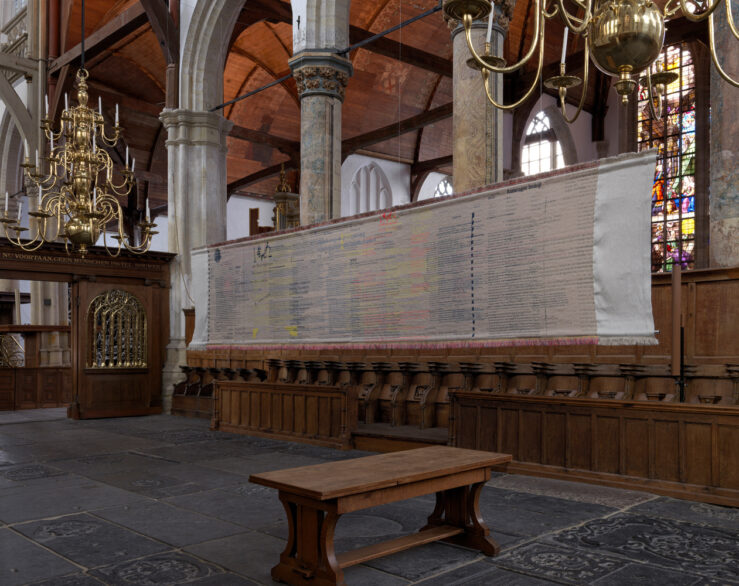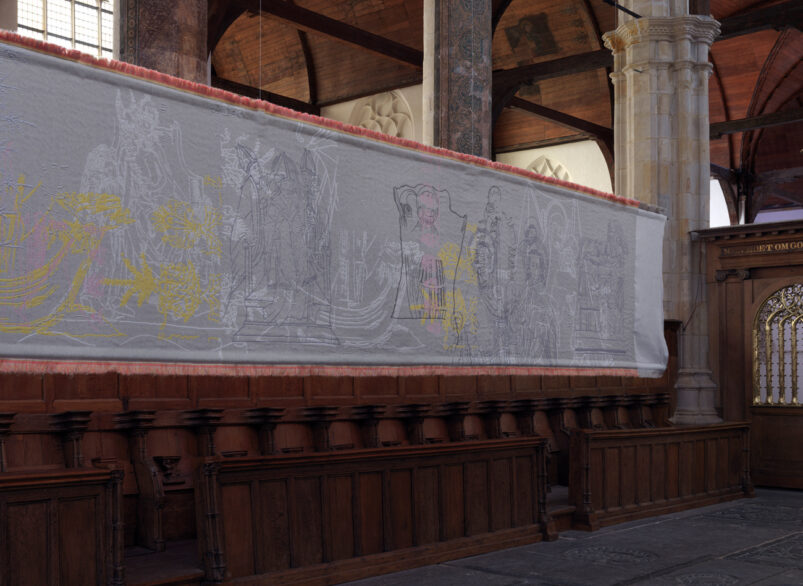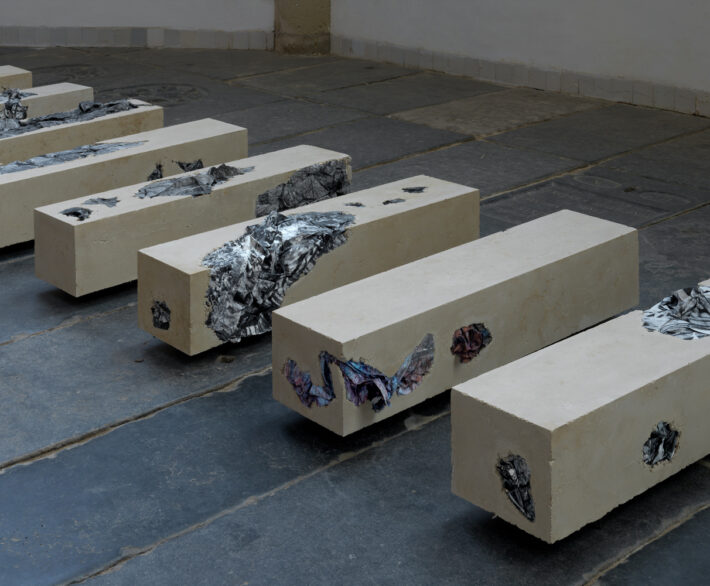












Change: it is perhaps the only constant in the eventful history of the Oude Kerk and in society. How do we deal with change over time and what precedes it? These questions are central to the installation by artist Aimée Zito Lema in the Oude Kerk.
Also see

Gewelfschilderingen -

Giorgio Andreotta Calo -
Anastasis
Hover for exhibition details
For the past three years Zito Lema has been delving into the archives of the Oude Kerk. Interested in the reinterpretation of history and the value of heritage, two moments of resistance stood out to her. The Beeldenstorm (Iconoclastic Fury), which took place here on 23 August 1566 and in which people resisted the power of the Roman Catholic Church. And the recent resistance to the installation of a red window in the Holy Sepulchre, which some people believe affected monumental values.
Resistance
It is moments like this of resistance that are indicative of the change that follows. The installation in the church pauses at this point. You will see water basins with photos and building elements, you will hear poems being spoken and, wandering through the church, you will come across a number of sculptures in which photos on paper have been incorporated. In the High Choir you will find two extensive textile works. All these elements together reflect on the way in which resistance and change work for you as an individual and for society. What does resistance mean for the course of ‘our’ history? And how do we as a society initiate change?
About Aimée Zito Lema
Aimée Zito Lema (1982) was born in Amsterdam and grew up in Buenos Aires. She studied at the Universidad Nacional de las Artes (Buenos Aires), the Gerrit Rietveld Academy (Amsterdam) and the Royal Academy of Art (The Hague). She was also a resident at the Rijksakademie van beeldende kunst Amsterdam), which celebrates its 150th anniversary this year, among others. The fascination with social resistance runs like a thread through Zito Lema’s work: she previously made work about the Argentine dictatorship and the protests during the construction of the Stopera. Her work has been shown at MACBA, Centre Pompidou and the Gwangju Biennale, among others. The exhibition in the Oude Kerk will be her largest solo show to date, and it is the first time she has made such extensive context-specific work.
